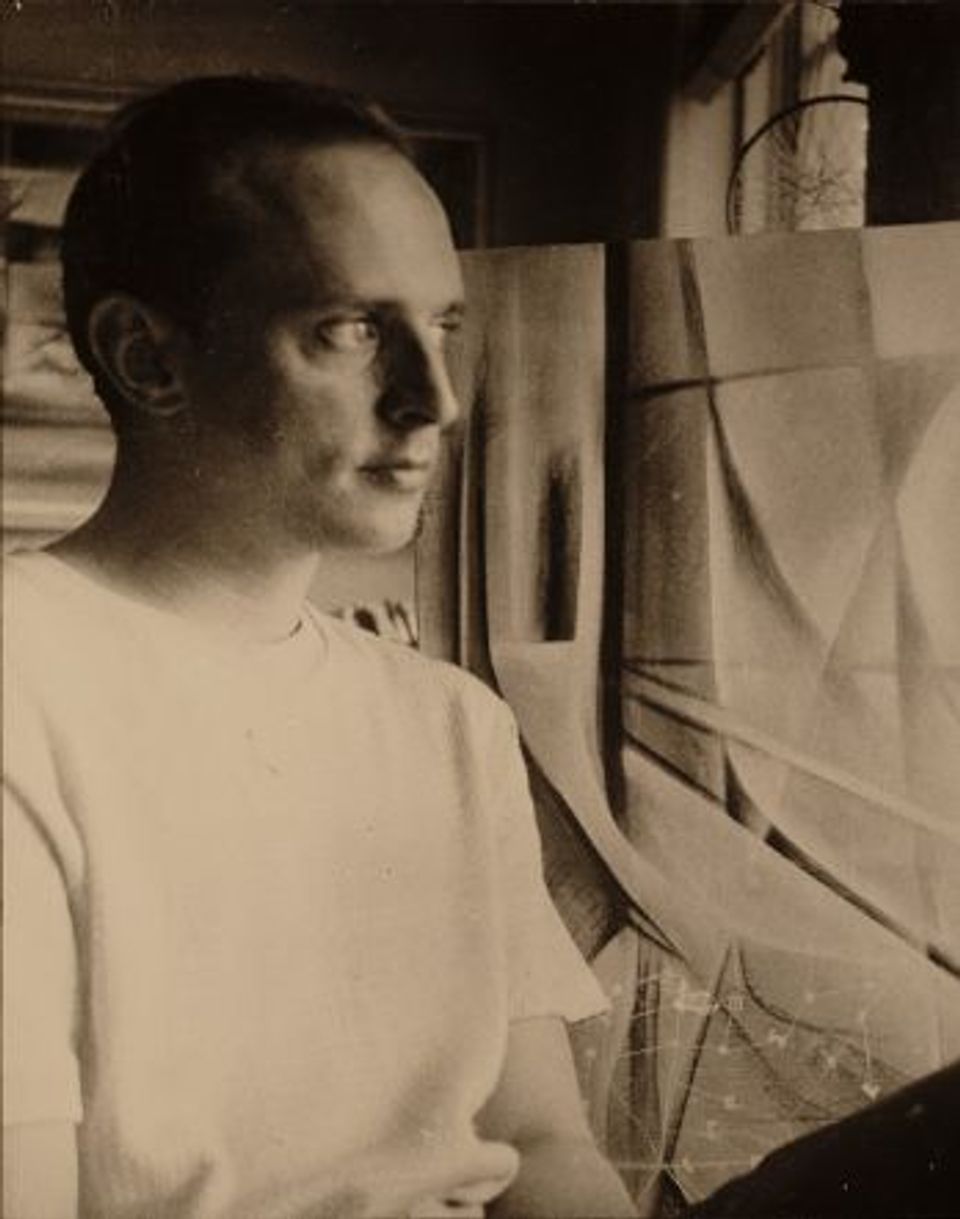Jimmy Ernst

- Born
- Cologne, Germany
- Active in
- East Hampton, New York, United States
- Biography
The son of Surrealist Max Ernst, Jimmy Ernst attended several European craft schools and served an apprenticeship in printing and typography before immigrating to the United States in 1938. He worked in advertising agencies and art galleries for several years, and not until age twenty did he decide to become a painter. Ernst's early canvases were tinged with Surrealism, and his first solo show featured organic abstractions. His interpretations of jazz themes during the 1940s, in which discrete color areas were used to approximate syncopation and rhythm, yielded in the 1950s to experiments with line that determined his future directions. In his mature work, Ernst used complex inter-locking webs of line to manipulate pictorial space and to create architectonic structures. Always abstract, his later paintings possess the spatial quality of panoramic cityscapes.
Virginia M. Mecklenburg Modern American Realism: The Sara Roby Foundation Collection (Washington, D.C.: Smithsonian Institution Press for the National Museum of American Art, 1987)
- Luce Artist Biography
Jimmy Ernst was the son of the German painter Max Ernst and spent his childhood surrounded by Dada and surrealist artists. Paul Klee taught Jimmy’s mother how to change her son’s diapers, and Man Ray was one of the first people to teach the boy English. Ernst was an apprentice in a printing plant in Germany during the 1930s and spent many summers in Paris, where his parents had moved hoping to escape the coming war. Because Jimmy was half Jewish, he left Germany for America in 1938. He worked for the Museum of Modern Art’s film library, and although he had once said that he wanted “nothing to do with art,” he began to sketch and paint during his free time. His father fled France a few years later and came to America with Peggy Guggenheim, who gave Jimmy a job organizing and finding a home for her massive art collection. (Ernst, A Not-So-Still Life: A Memoir, 1984)













